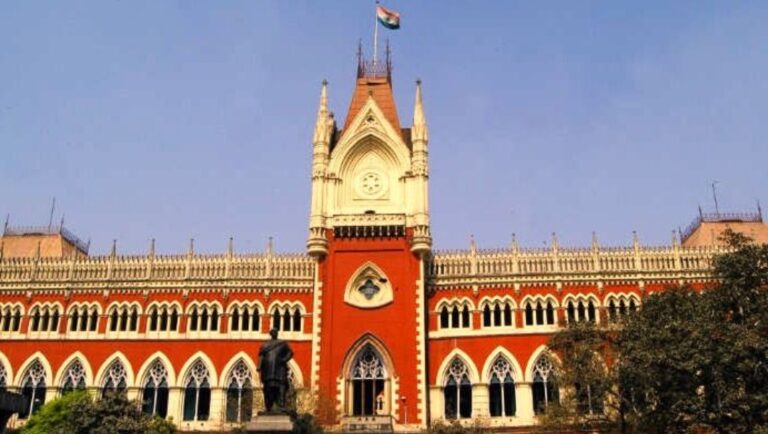The recent rulings of the Calcutta High Court in Gopal Rathi vs. Ratan Banik and Santosh Kumar Sah vs. Union of India mark a significant shift in how GST arrests must be approached in India. For too long, enforcement practice leaned on a “arrest first, investigate later” mindset, often disregarding procedural safeguards and personal liberty. The Court has now made it clear: arrest under GST laws is not a routine tool but an exceptional measure, strictly governed by the Bharatiya Nagarik Suraksha Sanhita, 2023 (BNSS). These decisions, read alongside recent Supreme Court directions on BNSS Section 35, reaffirm that economic offences, however serious, do not override constitutional protections. Instead, enforcement must be evidence-driven, legally sequenced, and respectful of liberty.
Cases: Gopal Rathi Vs Ratan Banik (Calcutta HC) and Santosh Kumar Sah Vs Union of India (Calcutta HC)
Why This Judgment Matters
The Calcutta High Court has sent a strong and timely reminder to GST authorities: personal liberty and statutory safeguards are non-negotiable, even in serious economic offence probes. By granting bail in Santosh Kumar Sah earlier and now in Gopal Rathi, the Court has reaffirmed that the investigative state must follow the Bharatiya Nagarik Suraksha Sanhita, 2023 (BNSS) before invoking coercive powers.
This is not about weakening enforcement. It is about strengthening the rule of law.
Key Takeaways from the Gopal Rathi Order
👉 BNSS Section 35(3) is mandatory, not optional
- The Court noted that the petitioner complied with every summons.
- No physical notice under Section 35(3) BNSS was served before arrest, despite the alleged offence carrying a maximum 5-year sentence.
- Since all critical documents were already seized, custodial interrogation was unnecessary.
- Detaining the accused for 40+ days served no purpose.
Bottom line: Arrest must be backed by statutory sequence, not administrative convenience.
Lessons from the Santosh Kumar Sah Case
In this case, the High Court rejected the Department’s reliance on toll-plaza “no record” flags as proof of non-movement of goods.
- Primary evidence spoke louder: stock tallies matched invoices, CCTV footage confirmed unloading, and even the Department’s panchanama proved receipt.
- The arrest was held premature and disproportionate, as there was no new incriminating evidence.
Key principle: Arrest cannot substitute investigation; evidence, not analytics, must drive custody decisions.
The Supreme Court’s Reinforcement on BNSS Section 35
The Apex Court has now clarified how BNSS Section 35 operates:
- If immediate arrest isn’t required, the officer must first serve a notice under Section 35(3).
- Compliance with the notice under 35(4)–(5) usually bars arrest.
- Even non-compliance does not create an automatic arrest right—specific, case-linked reasons under 35(6) are mandatory.
- Importantly, WhatsApp or e-service is invalid for Section 35 notices. The legislature deliberately excluded electronic service because this act directly affects liberty.
Implication: GST officers exercising police-like powers must strictly follow this safeguard.
What This Means for GST Enforcement
- Section 35(3) BNSS notice is a legal prerequisite before arrest in 5-year maximum offences—common under GST.
- Document-driven cases need document-driven investigation—custody rarely adds value.
- “Economic offence” is not a magic phrase. Gravity strengthens due process, it doesn’t weaken it.
- These safeguards are not technical loopholes—they ensure legitimate, sustainable enforcement.
A Playbook for Investigating Agencies
- ✅ Serve notices physically as per BNSS 35(3). Avoid electronic shortcuts.
- ✅ Respect compliance history—consistent cooperation weighs against arrest.
- ✅ Record specific reasons when shifting from notice to custody. Generic claims of “serious offence” won’t suffice.
- ✅ Prioritize primary evidence (invoices, stock, CCTV) over indirect analytics (like toll-data anomalies).
Judiciary’s Consistent Message
Both Calcutta High Court orders highlight one theme: in GST investigations, arrest must be the exception, not the rule.
The Supreme Court has also upheld that liberty cannot be compromised for administrative ease—BNSS safeguards must be followed to the letter.
Wake-Up Call for Authorities
The Calcutta High Court has reminded that the GST Department is a “State” under Article 12 of the Constitution. Its duty is two-fold:
- Protect government revenue, and
- Prevent harassment, reputational harm, or unnecessary custody of taxpayers.
This means:
- Apply mind to real evidence before acting.
- Honor BNSS safeguards before arrest.
- Reserve custody for rare, exceptional cases.
Final Word: Time to Recalibrate Enforcement
These rulings are not a shield for tax evaders—they are a roadmap for fair and lawful enforcement.
👉 For administrators: Follow BNSS 35 diligently, let records speak, and use custody only when demonstrably necessary.
👉 For industry: Maintain robust documentation, cooperate consistently, and assert your safeguards confidently.
Arrest at discretion is not enforcement—it’s error.
The Calcutta High Court has drawn the line, and the Supreme Court has given the manual. It’s time GST enforcement plays by the rules.
